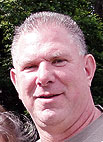
After retiring in 1992 from Wal-Mart as a store manager, Murle Gilbreath came back to Summers, Ark., where he was born and raised. He needed something to do, a hobby, so he decided to start raising cattle.
Over the past 16 years, Murle has raised and sold over 1,000 Angus bulls. Murle, owner of XX Bar G Ranch prides himself in his ability to produce high quality Black Angus bulls.
Murle works his farm with Brody Collins and his son-in-law Steve Flickinger. “We are pretty much a three man wrecking crew, we do everything ourselves,” said Murle.
XX Bar G Ranch consists of 847 acres, and the ranch is divided into four farms. Murle occasionally fertilizes his fields with chicken or turkey litter and sometimes a commercial fertilizer, but mainly lets nature take its course. With so much land, he is able to produce enough hay to feed his cattle freely from his cuttings.
“This year we got about 2,200 round bales and about 800 square bales,” said Murle. He stores his hay both in the barn and in the pastures in hay traps. “In real cold winters, when there is snow on the ground I feed out of the barn,” said Murle.
Murle’s primary business is a seedstock producer of registered Black Angus bulls for commercial farmers.
Nutrition
Feeding the right amount and mixture of feed is important in raising healthy, good quality bulls. Murle feeds his young heifers and bulls hay he has produced along with a special mix of corn and oats.
“The corn gives the cattle energy and makes them fleshy, while the oats help with the bone structure,” said Murle.
He feeds his bulls about 6 pounds of this mix per day and allows them to feed freely on hay. He is very careful in his feeding rations so that he does not put too much weight on his bulls.
“You can feed a bull too much. They will get fat and look fleshy, but you’ll blow the front end out of them and ruin their feet. I kind of bring them along slower – you can see they are in great shape,” Murle pointed out.
Record Keeping
Accurate record keeping is also important in raising registered cattle. When the calves are born they are tattooed in the ear and again once calves are weaned. Doing this ensures a readable tattoo when the cattle are 2 years old when they are sold.
“The registration process is just like the pedigree on a race horse,” said Murle. “I can tell you when every calf was born, how much it weighed, who it’s out of and how they performed.”
It’s a lot of work keeping up with it all admitted Murle, but he enjoys what he does and wants to improve the genetics of Black Angus cattle in his area.







